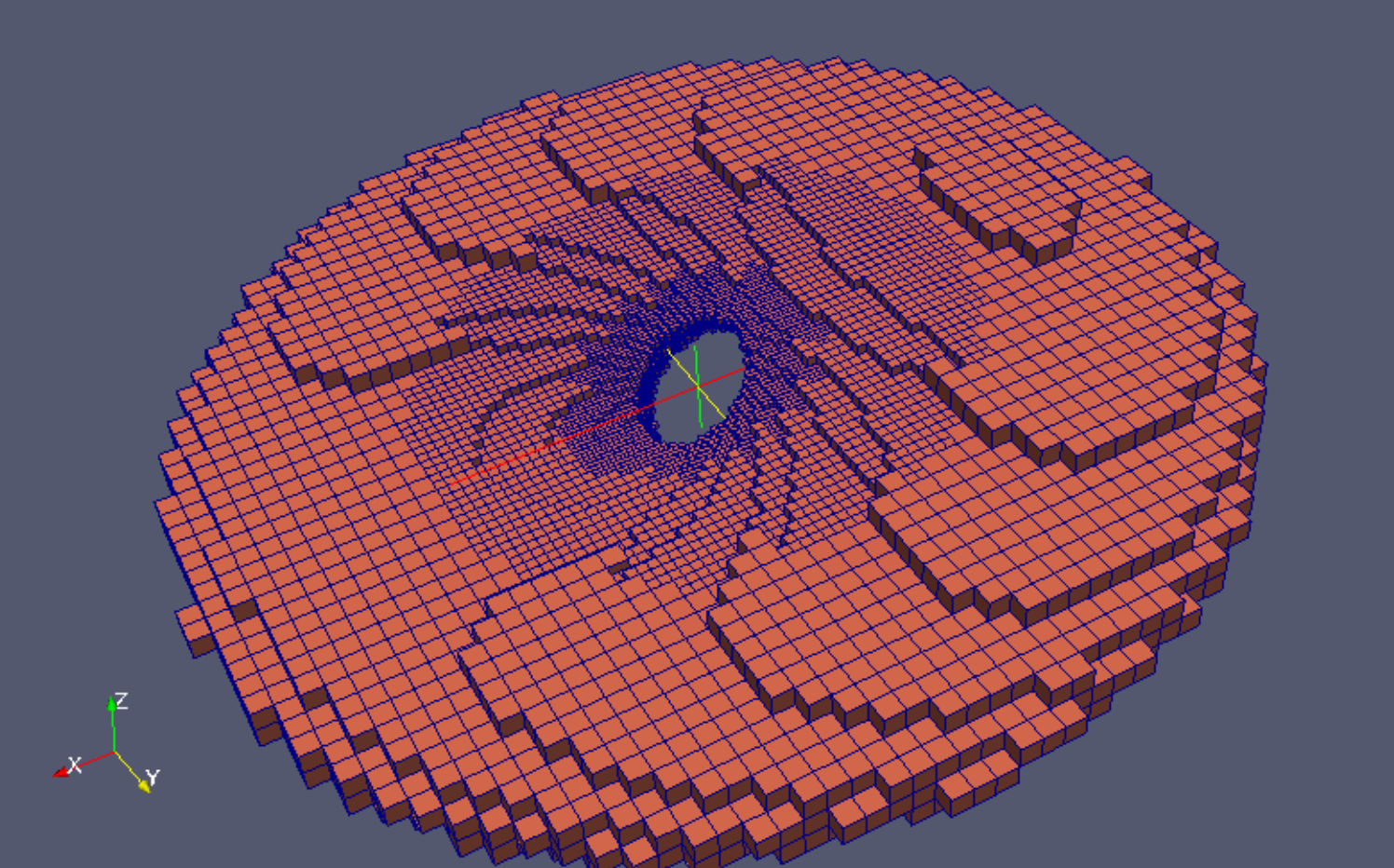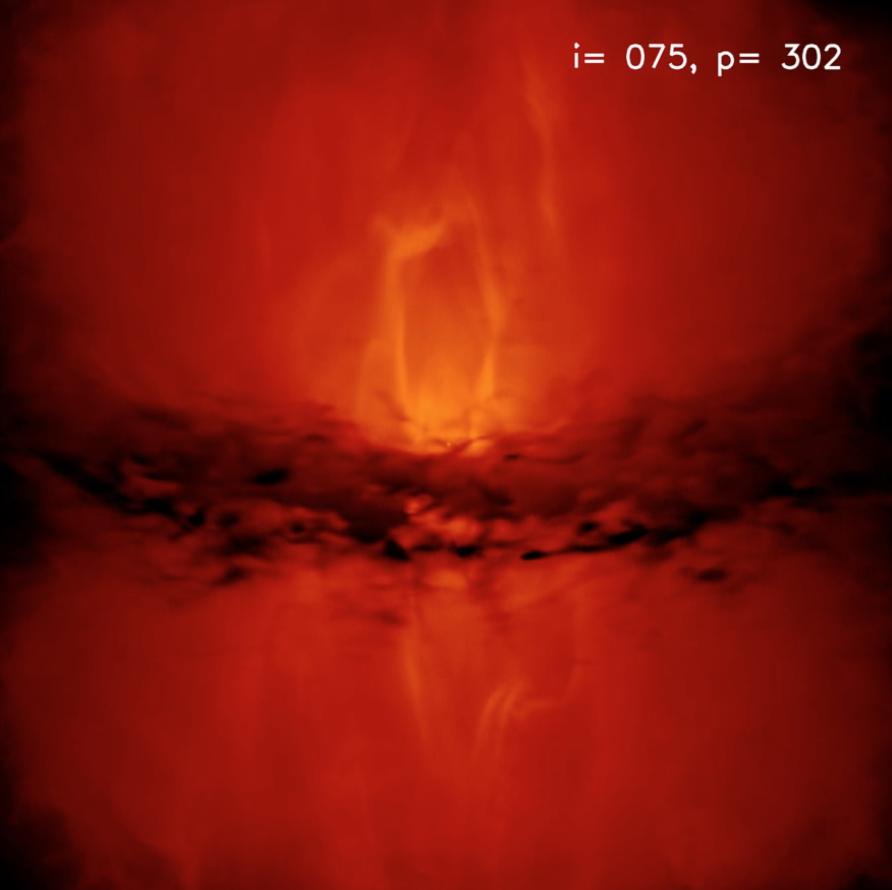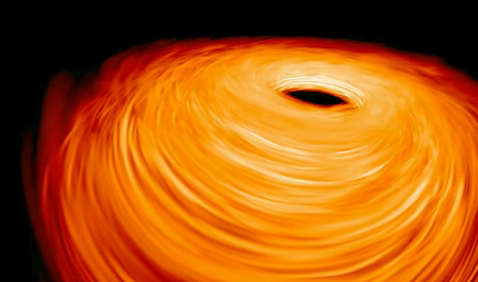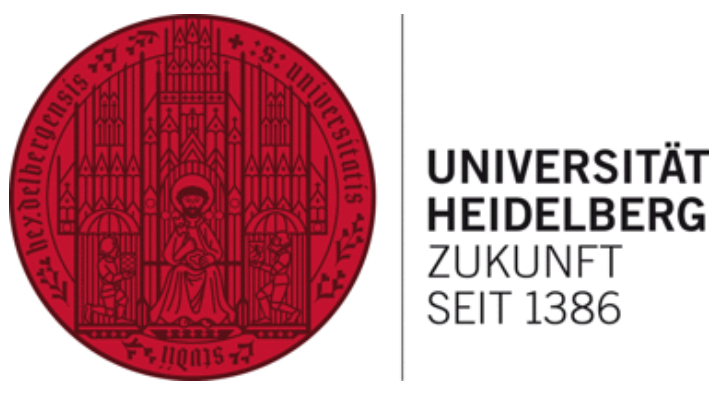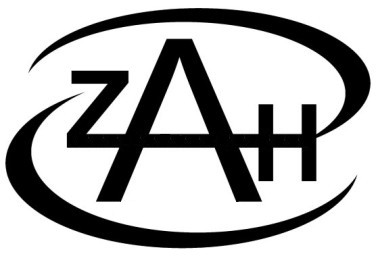
Gallery
Synthetic observations of 3-D hydrodynamics model of an AGN torus
The unification principle of active galactic nuclei (AGN) says that the difference between type 1 and type 2 AGN is simply a viewing-angle issue. Some viewing angles allow direct sight of the central engine, while others have this central engine obscured by the dust and gas in the circumnuclear environment. Shown here is the 3-D hydrodynamics model of such an AGN torus by M. Schartmann, K. Wada, M.A. Prieto, A. Burkhardt and K.W.R. Tristram (2014) MNRAS, 445, 3878.
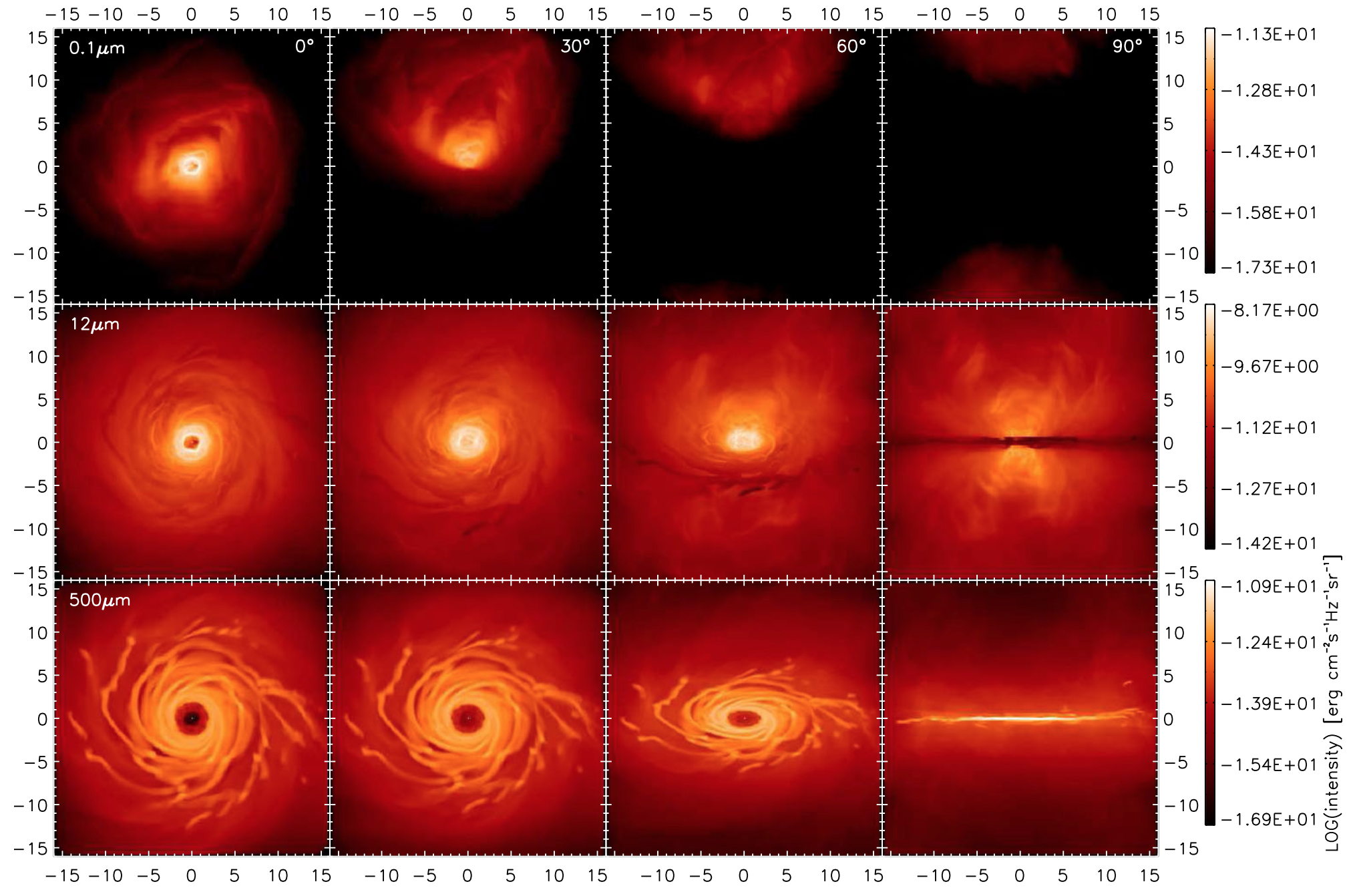
And here is a movie of a similar model by K. Wada, M. Schartmann and R. Meijerink (2016) ApJ, 828, L19: (click on the image to download the movie)
Volume rendering with a user-defined transfer function.
This enables you to analyze your 3-D models with volume rendering, and you can determine entirely yourself how the opacities and emissivities depend on density, temperature, magnetic field, velocity etc. The primary envisaged use of this mode is to allow you to render your 3-D models for your own analysis, i.e. not for producing observation-realistic images. It is in that sense like ordinary 3-D rendering tools (such as VisIt) but it gives you more control over the opacities and emissivities, it works for all the grid-types of RADMC-3D and in second-order-integration mode it gives smoother images. Below you see four renderings of a 3-D MHD protoplanetary disk model with magnetorotational turbulence by Mario Flock from the MPIA in Heidelberg. This is a pie-piece of a snapshot of his model. Shown is the magnetic pressure. Artificial opacity is used to give a 3-D feel to it, and to show the depth stratification of the model. The four snapshots are for decreasing opacity.
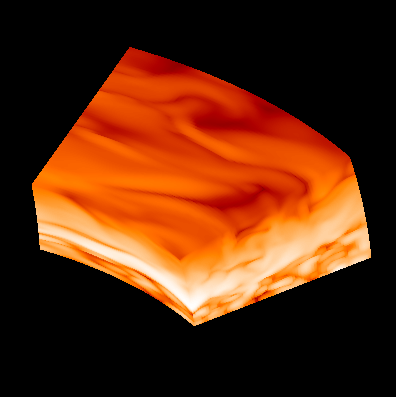
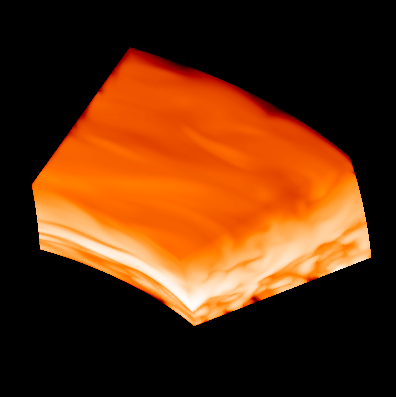
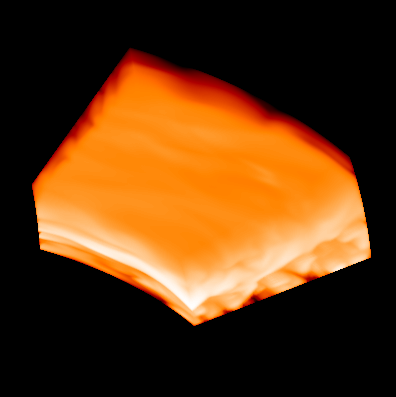
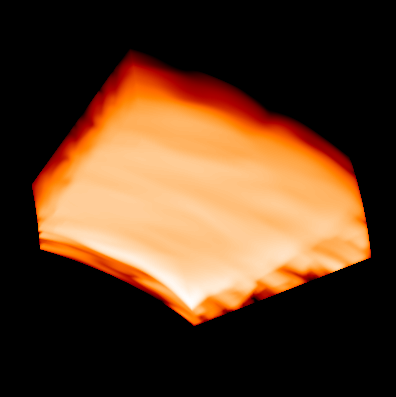
Also it allows local perspective with fish-eye projection, useful for Planetarium Dome (OMNIMAX) projections. The same disk, again the magnetic pressure, is shown below in such a dome projection (hence the distortion). The star is not shown. Click on the image to see the corresponding movie.
Note that this is in AVI format and you may need some codecs for that. The 3-D MHD model was done by Mario Flock, MPIA Heidelberg using the PLUTO code. The rendering with fish-eye local-observer projection was also done by Mario Flock, using RADMC-3D.
Polarized scattering of thermal emission
Scattering of light by dust particles does not only occur at optical and infrared wavelengths. As Akimasa Kataoka has shown, if grains are large enough, the scattering of thermal dust emission by dust grains at submillimeter wavelengths leaves very striking polarization signatures in the maps.
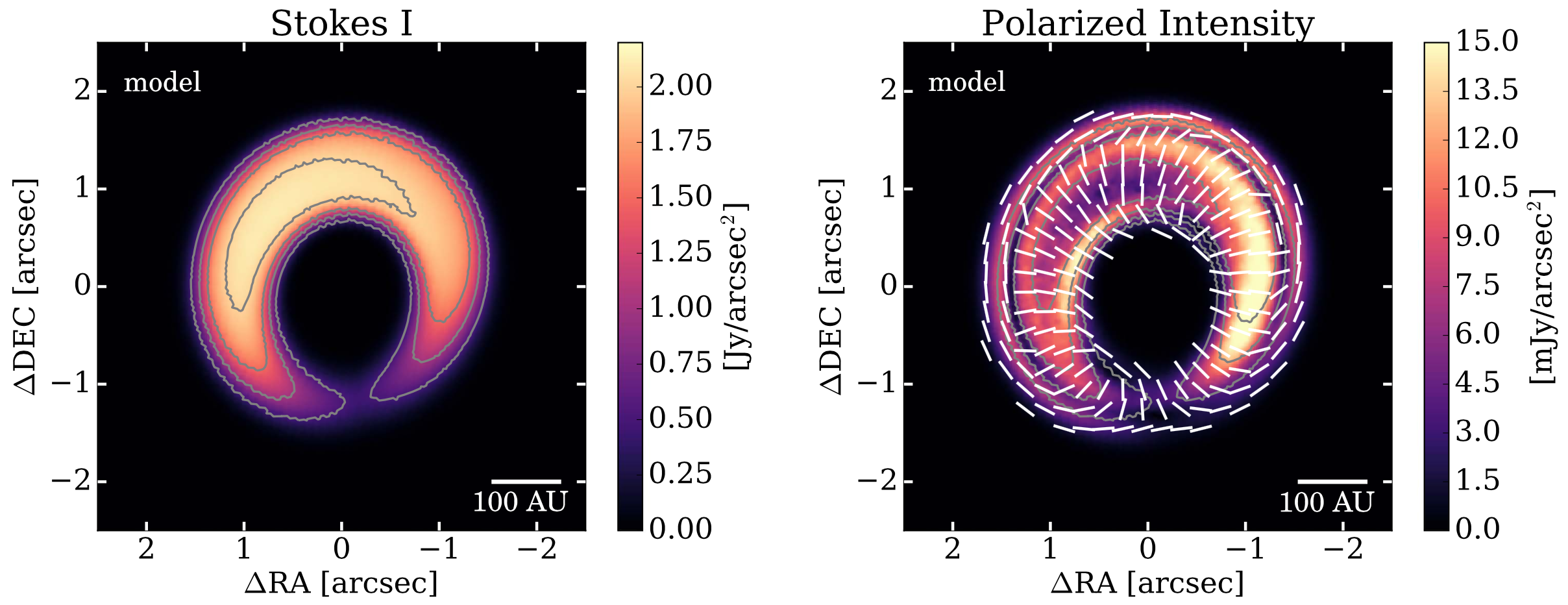
Molecular line channel maps
In addition to dust continuum radiative transfer, RADMC-3D can also do line transfer. Here is an example of a channel map of CO J=2-1 of the disk around HD 163296 for the analysis of the DSHARP data. Three models are shown with varying degrees of CO freeze-out.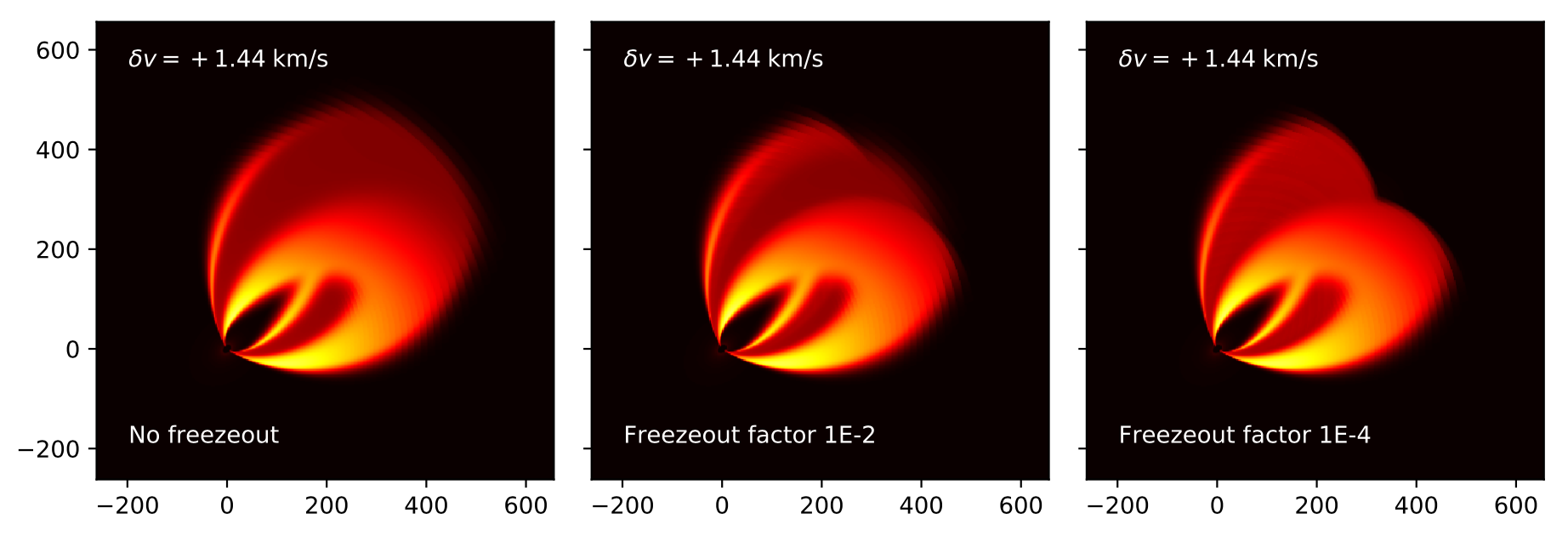
VTK output
Complex 3-D models on oct-tree refined grids can be hard to visualize using standard IDL or Python tools. RADMC-3D has VTK output capability, so that the model can be viewed using 3-D visualization software such as PARAVIEW. The example shown here is a 3-D model of a warped disk created with the oct-tree mesh refinement capabilities of RADMC-3D, viewed with PARAVIEW, via the VTK output.
